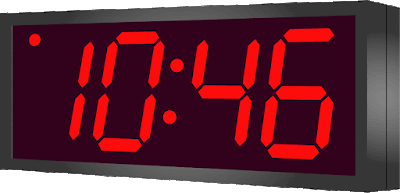An LED alarm clock, like many digital clocks, keeps time using an electronic timekeeping mechanism. Here is a detailed explanation of how an LED alarm clock keeps accurate time:
Timekeeping Circuit: Inside the clock, there is a dedicated timekeeping circuit that serves as the core component for tracking time. This circuit typically consists of a crystal oscillator, counters, and logic circuitry.
Crystal Oscillator: The clock's timekeeping circuit utilizes a quartz crystal oscillator. Quartz crystals possess the property of piezoelectricity, which means they can generate a precise electrical signal when subjected to mechanical pressure. The crystal oscillator produces a stable frequency, usually in the range of several kilohertz (kHz) or megahertz (MHz).
Counters and Logic Circuitry: The crystal oscillator's frequency is divided down by counters and logic circuitry to produce the necessary clock signals for tracking seconds, minutes, and hours. These counters keep track of the passage of time and provide a reference for displaying the current time.
Real-Time Clock (RTC) Chip: Many LED alarm clocks employ a dedicated integrated circuit known as a real-time clock (RTC) chip. The RTC chip contains a highly accurate oscillator, additional counters, and registers to store the time and date information. It interfaces with the timekeeping circuit to ensure precise timekeeping.
Power Backup: To maintain accurate time even during power outages or when the clock is unplugged, LED alarm clocks often incorporate a power backup mechanism. This backup can be in the form of a small battery, typically a coin cell battery, which powers the RTC chip. This battery ensures that the clock continues to keep time when the main power source is not available.
LED Display: The LED alarm clock uses light-emitting diodes (LEDs) as the display medium to show the current time. The counters and logic circuitry convert the digital time information into a format suitable for driving the LED segments, forming the digits and other display elements on the clock face.
Time Adjustment: LED alarm clocks usually include buttons or controls that allow the user to adjust and set the time. These controls enable the user to synchronize the clock with an accurate time reference, such as a standard wall clock or a time signal received from an external source.
By combining these components and mechanisms, an LED alarm clock can accurately track time and display it on the LED display. The precise oscillation of the quartz crystal, along with the counter and logic circuitry, ensures that the clock maintains accurate timekeeping. The inclusion of an RTC chip and power backup mechanism further enhances the clock's reliability by keeping time even in the absence of external power.
Overall, an LED alarm clock employs electronic timekeeping techniques and precise oscillator technology to ensure accurate time display and reliable alarm functionality.
Source: Some or all of the content was generated using an AI language model


No comments:
Post a Comment
Contact The Wizard!
(he/him)